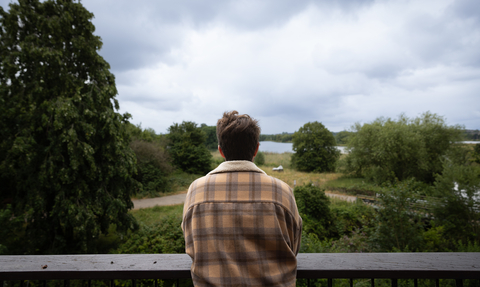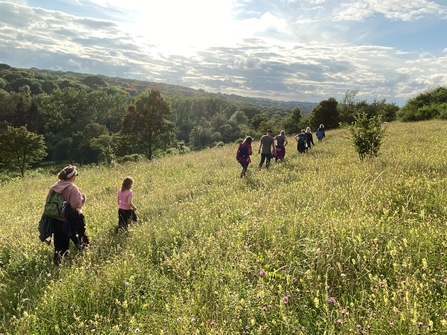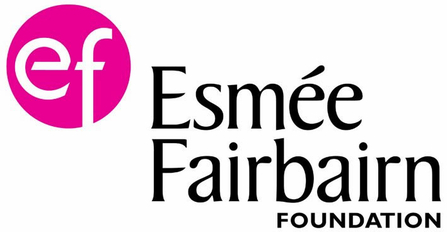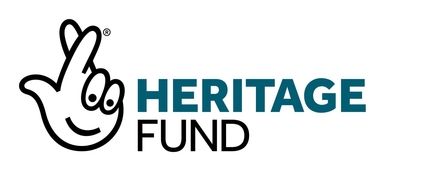
© Eleanor Church
Support from trusts and foundations
Grant funders generously support our work to restore London's wildlife and inspire Londoners.
We receive generous support from a wide range of trusts and foundations, lottery distributors, landfill funders and other grant making bodies.
From community outreach to outdoor education to landscape restoration, our grant funders support a broad range of our projects to benefit London’s people and wildlife.
If you are interested in finding out more about how your organisation could support the work of London Wildlife Trust, please contact Christina Sharp: csharp@wildlondon.org.uk.
We are immensely grateful to all of our supporters. Just a few are featured below.

Supporters of our work:
Esmée Fairbairn Foundation
The Esmée Fairbairn Foundation supported Water for Wildlife, a London-wide project to improve habitats and our knowledge of the waterbodies in the capital, and engaged volunteers across London in citizen science. The presence of dragonflies and damselflies is used as an indicator of the quality of freshwater habitats such as lakes, canals and rivers. Volunteers monitored dragonfly and damselfly species to help us better understand the health of London’s waterbodies. The knowledge gained through this project has been used to guide practical habitat improvements at 20 sites across London.
Greater London Authority (GLA)
The GLA, through their Greener City Fund Community Grant Scheme, has generously funded new floating reedbeds at Camley Street Natural Park, alongside desilting the pond to improve the area for pond dipping.
The multi-functional floating reedbeds are placed in the system on the Regent’s Canal. They incorporate excellent habitats for birds to nest, invertebrates to live, and fish to spawn and shelter from predators. The reedbeds also provide a range of ecosystem functions, including the absorption of excess nutrients from the water, mitigating canal pollution.
Michael Marks Charitable Trust

A generous grant from the Michael Marks Charitable Trust has funded our habitat conservation work on five of our chalk grassland reserves in south London. Over the course of a year we ran 156 volunteering days where volunteers cut back scrub and other invasive species, scythed the meadow, maintaining infrastructure on the reserves and collected green hay and wild flower seeds from the local flower-rich meadows to reseed bare patches of ground. Chalk grassland is one of the most endangered habitats in Britain, and one of the most species-rich: in a well-managed chalk grassland you can find as many as 40 different species in just one square metre. It is a landscape wildlife rich with hedgerows, orchids, reptiles, butterflies and glow-worms. It is particularly important for a range of nationally rare and protected species, such as the small blue butterfly and man orchid which are found across several sites in Sutton, Croydon, Bromley and north Surrey.
National Lottery Heritage Fund
A grant from the National Lottery Heritage Fund (NLHF) enabled us to deliver Keeping it Wild, the youth focused project which inspired 600 young people aged 11-25, from backgrounds currently under-represented in nature conservation and wildlife, to gain vital skills while discovering, conserving and sharing their experiences of the capital’s wild spaces.
The project ran over three years is being delivered in partnership with London Youth, Headliners and the John Muir Trust. Young Londoners from a range of backgrounds had the opportunity to take part in five different activity strands, with the programme path tailored – by young people themselves – to best suit their needs, interests and age group.
The National Lottery Heritage Fund, formerly known as the Heritage Lottery Fund, is the largest dedicated funder of heritage in the UK.
Since its creation in 1994, The Wildlife Trusts have worked closely with The National Lottery Heritage Fund to connect people to nature and each other, save precious wildlife-rich places, create new woodlands, wetlands, meadows and many other habitats and protect rare and endangered species.
The National Lottery Heritage Fund has invested a total of £7.9bn in 43,000 heritage projects. The hundreds of Wildlife Trust projects across the UK supported by the National Lottery Heritage Fund have benefited thousands of people from all walks of life – helping them to experience the joy of wildlife in their daily lives; from children and young people to older generations; from those living in urban areas to those in the countryside, or by the coast.
Reta Lila Howard Foundation
The Foundation kindly donated towards ‘Go Wild in the City’, an outdoor learning programme at Woodberry Wetlands that benefitted 2,700 school children and 1,460 local children based around Woodberry Downs. The programme included 'Tiny Tadpole' sessions for under 5's, weekend drop-in sessions for local families, a holiday nature club, formal school sessions and a weekend festival for the community to enjoy. All sessions hands-on and engaging half-day workshops of outdoor activities including, pond dipping, mini-beast hunts, discovering animals in the reedbeds, local seeds and germination, frog days and the life cycles of a wetland habitat.
Veolia Environmental Trust
Veolia Environmental Trust helped fund our vital work at Camley Street Natural Park, a unique urban nature reserve, surrounded by significant new development in a bustling part of central London - between King's Cross and St Pancras. The woodland, grassland and wetland habitats including ponds, reedbed and marshy areas, provide a rich habitat for birds, butterflies, amphibians and plant life, while a visitor centre caters for the thousands who visit annually.
During development, the old building was taken down and a new state of the art multi-purpose learning space was built in its place. The site was also relandscaped to ensure the more sensitive areas of the reserve are protected from the high footfall. The money from Veolia Environmental Trust also went towards essential work including creating a new meadow and hedgerow area, installing new paths and fencing and planting new trees.



